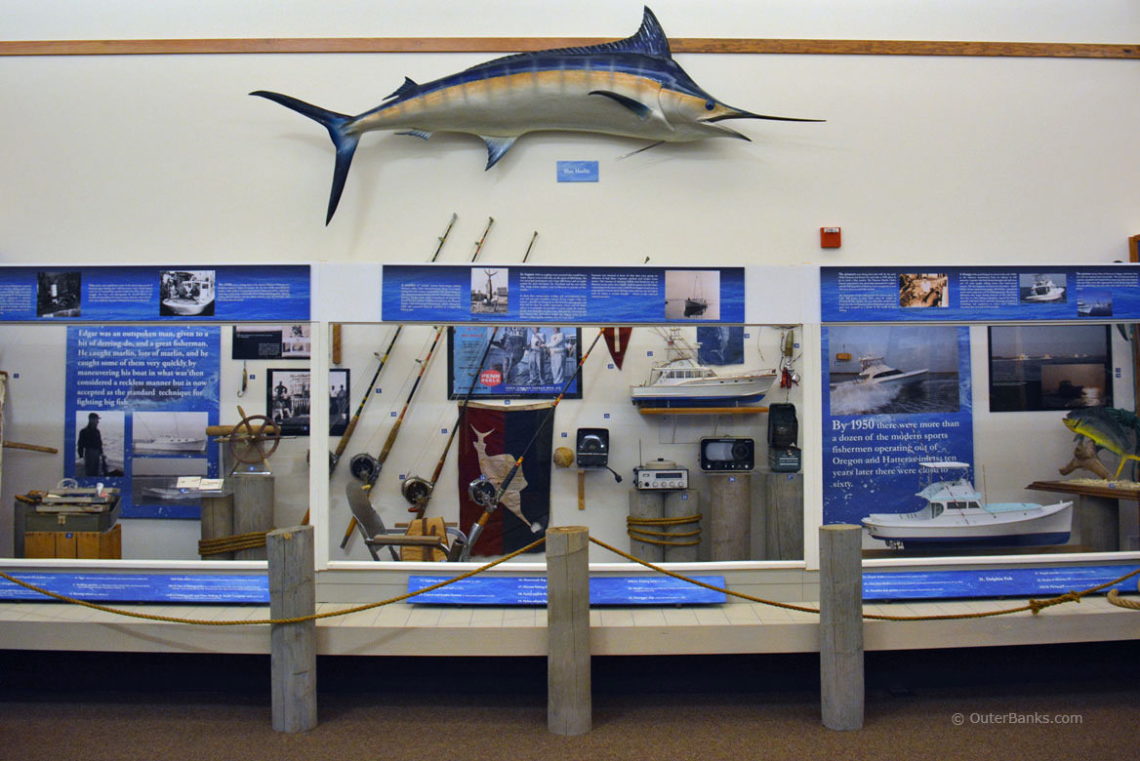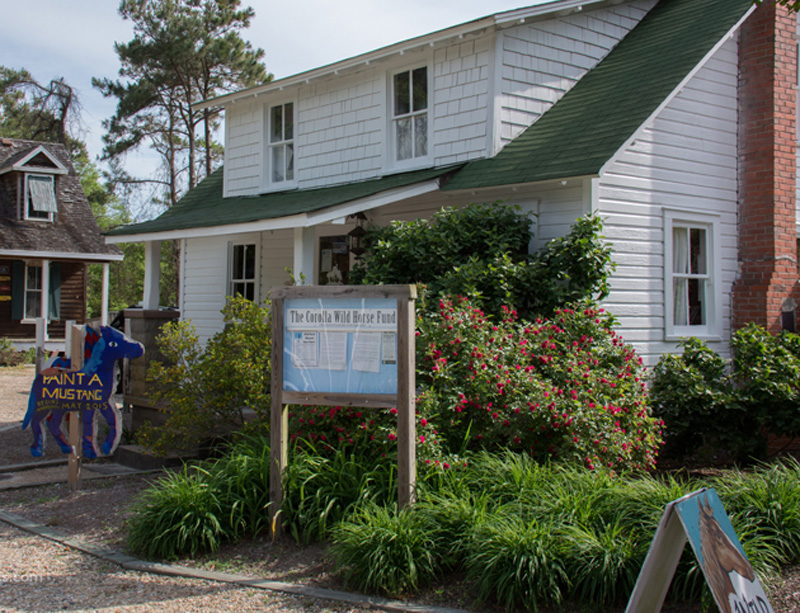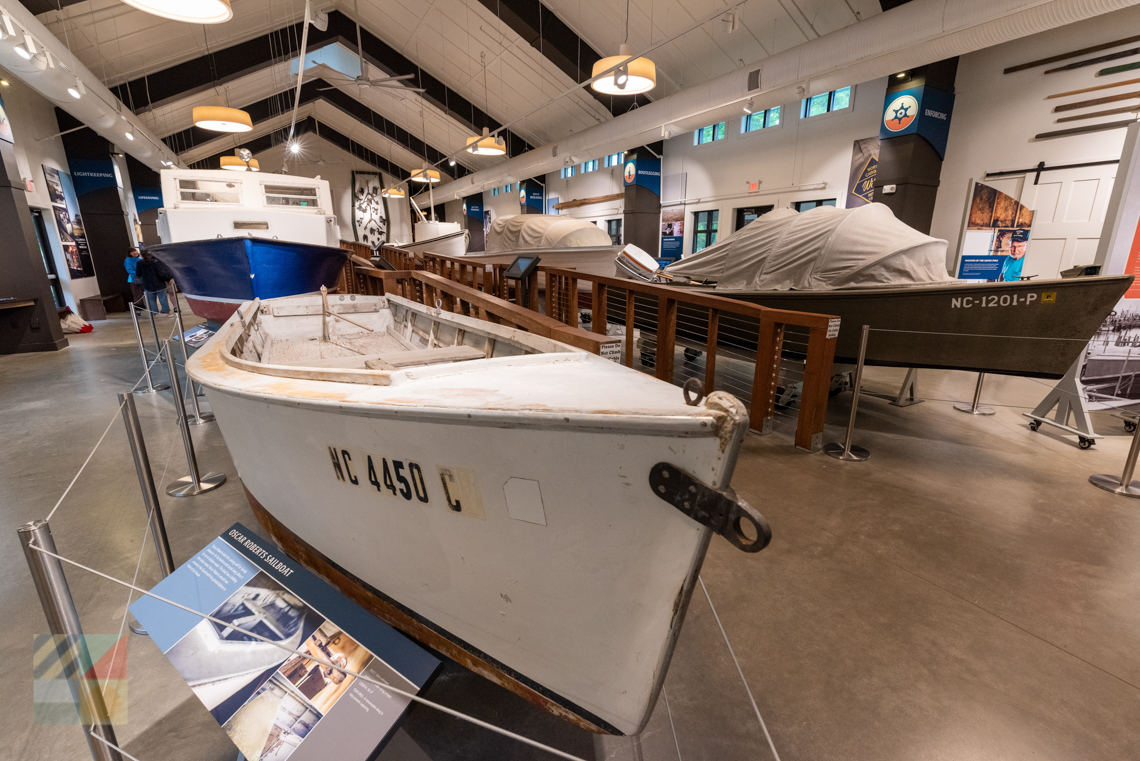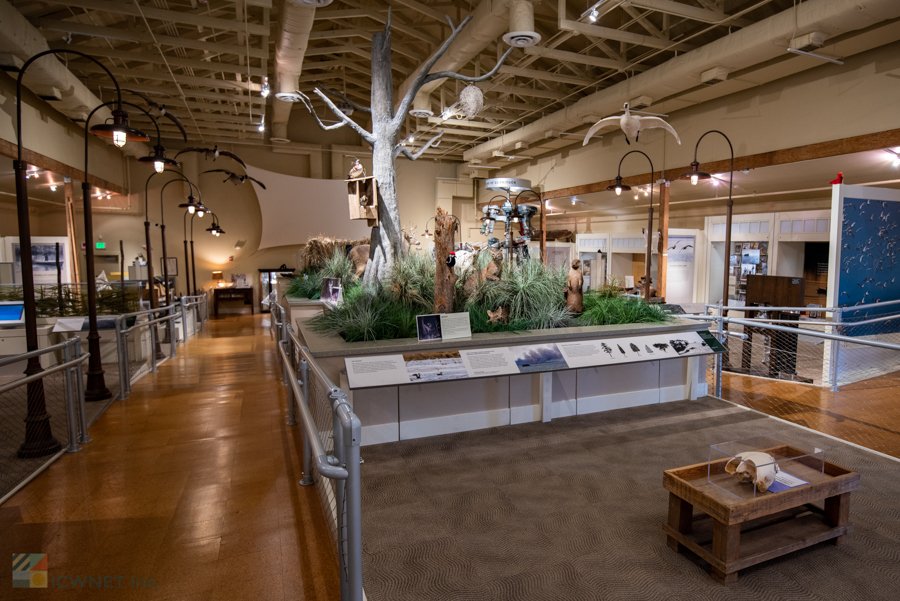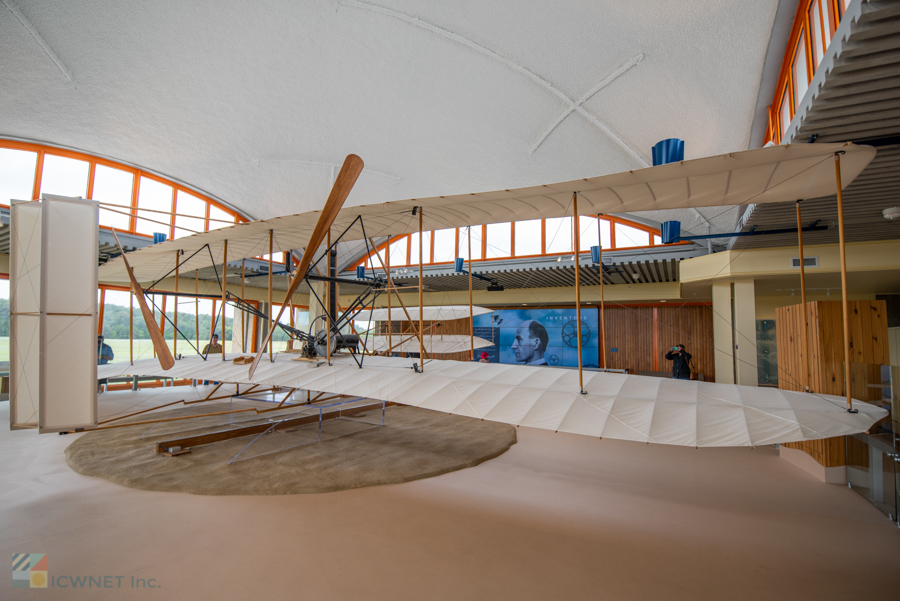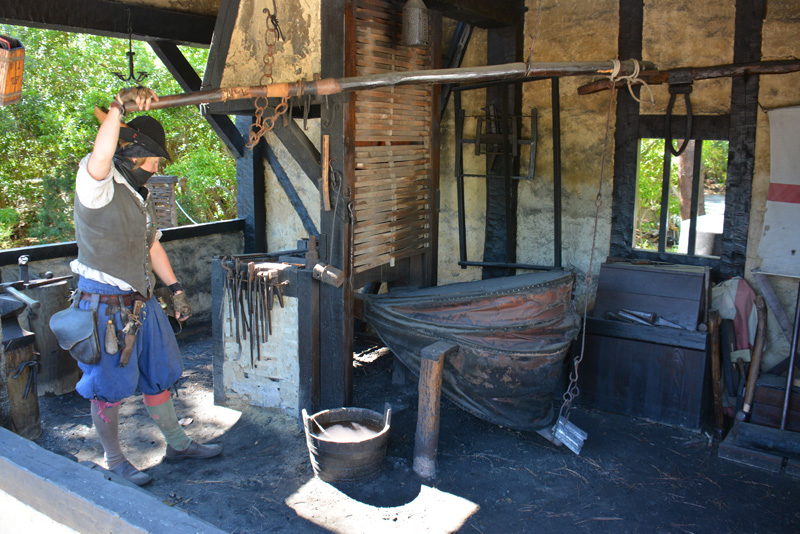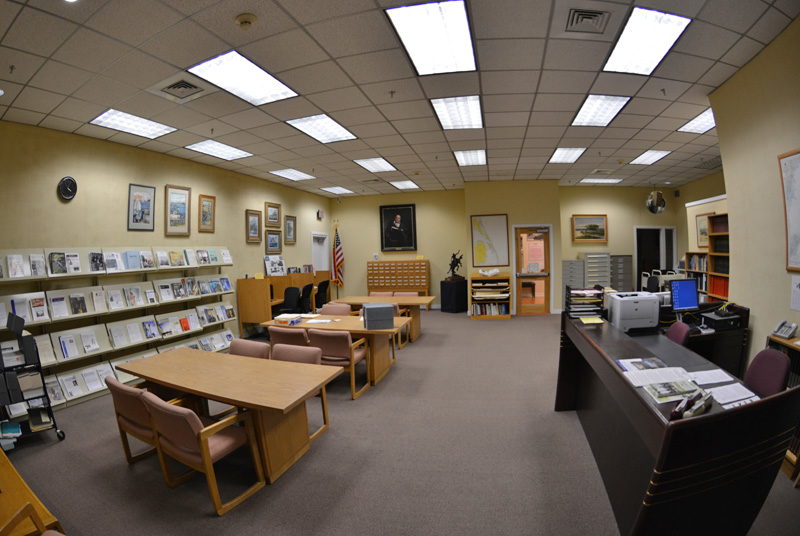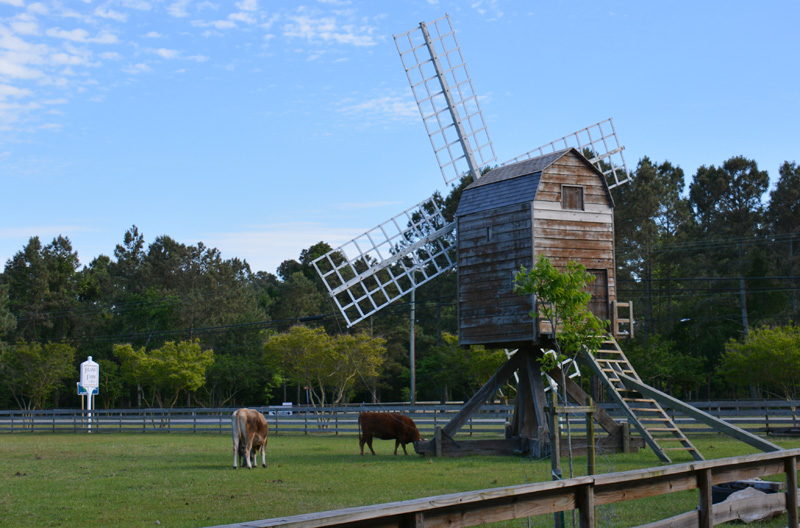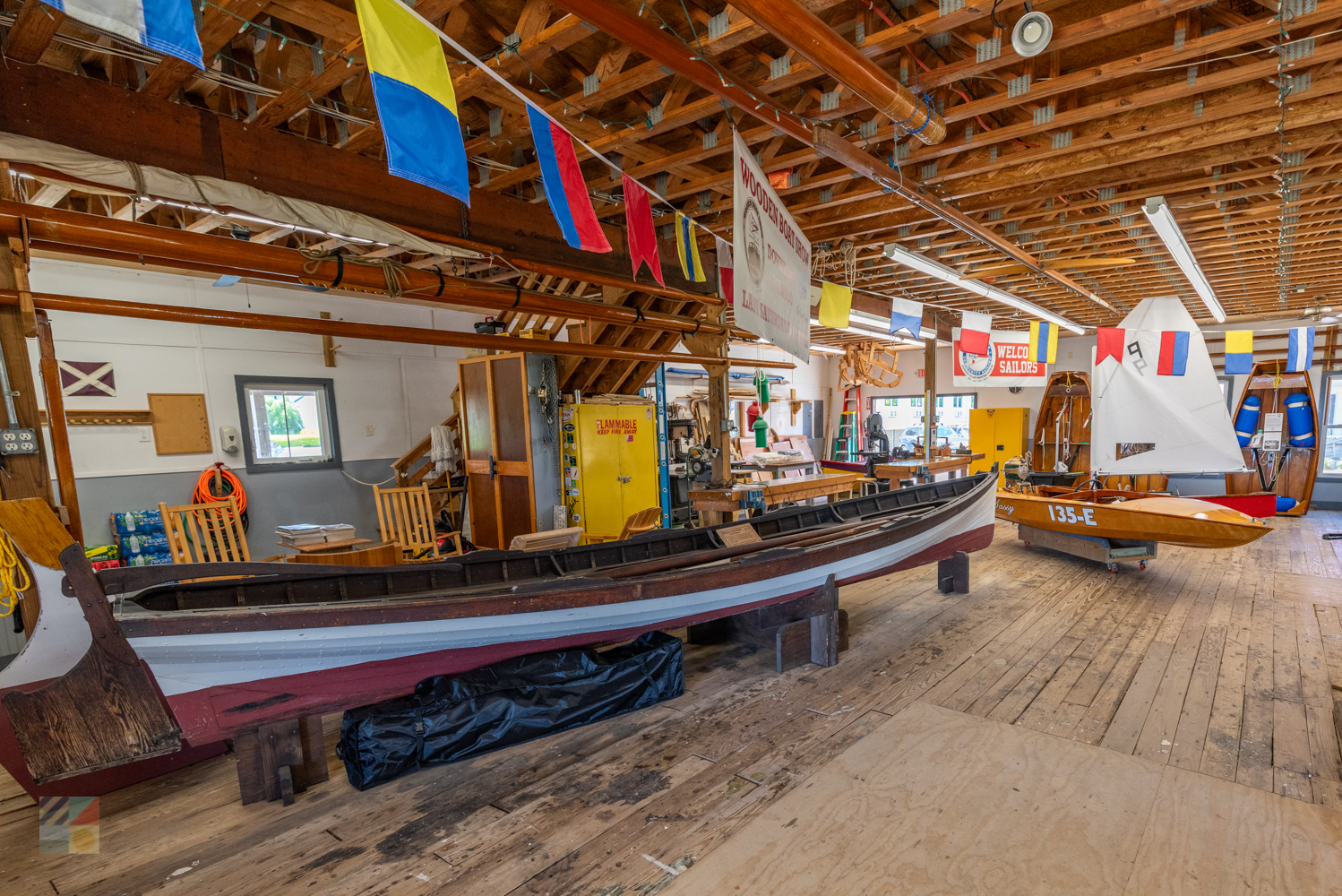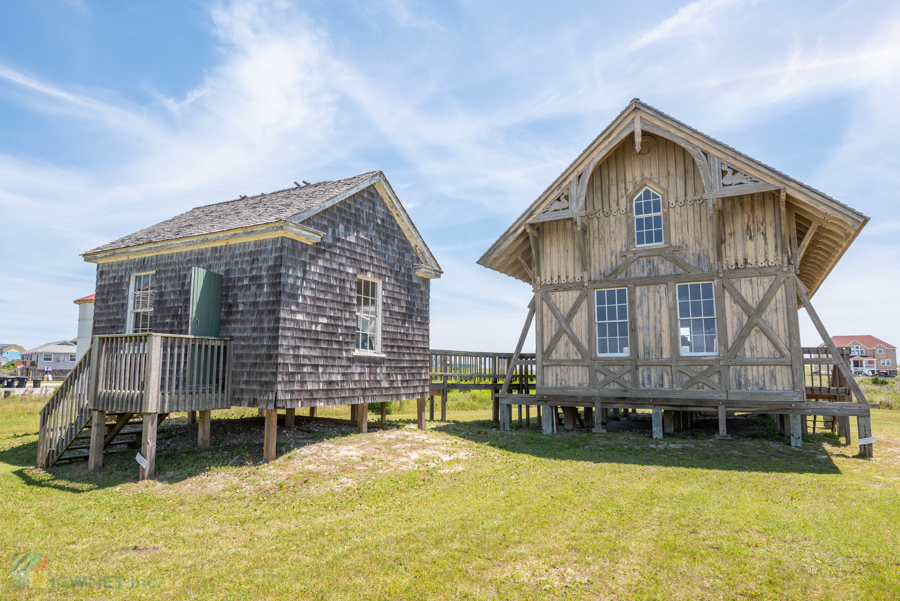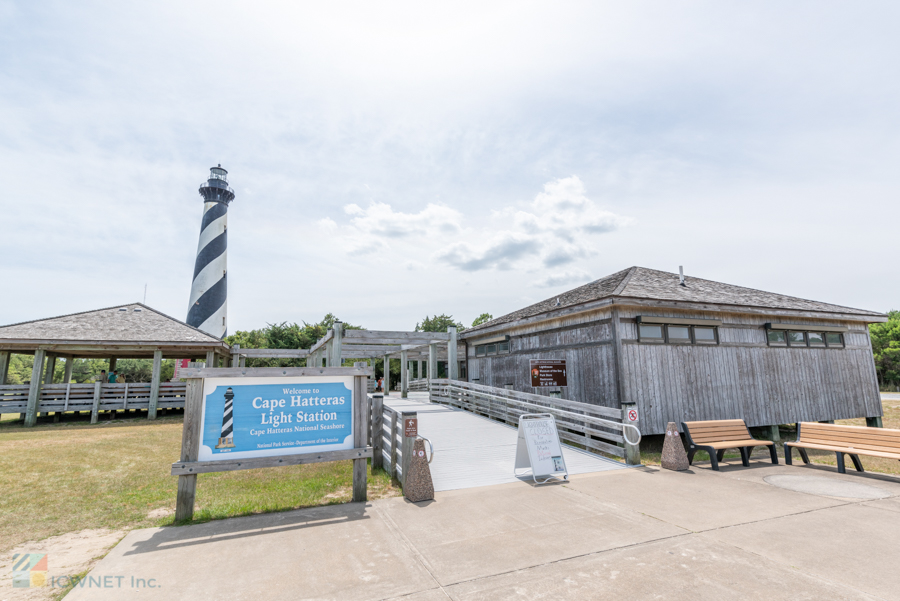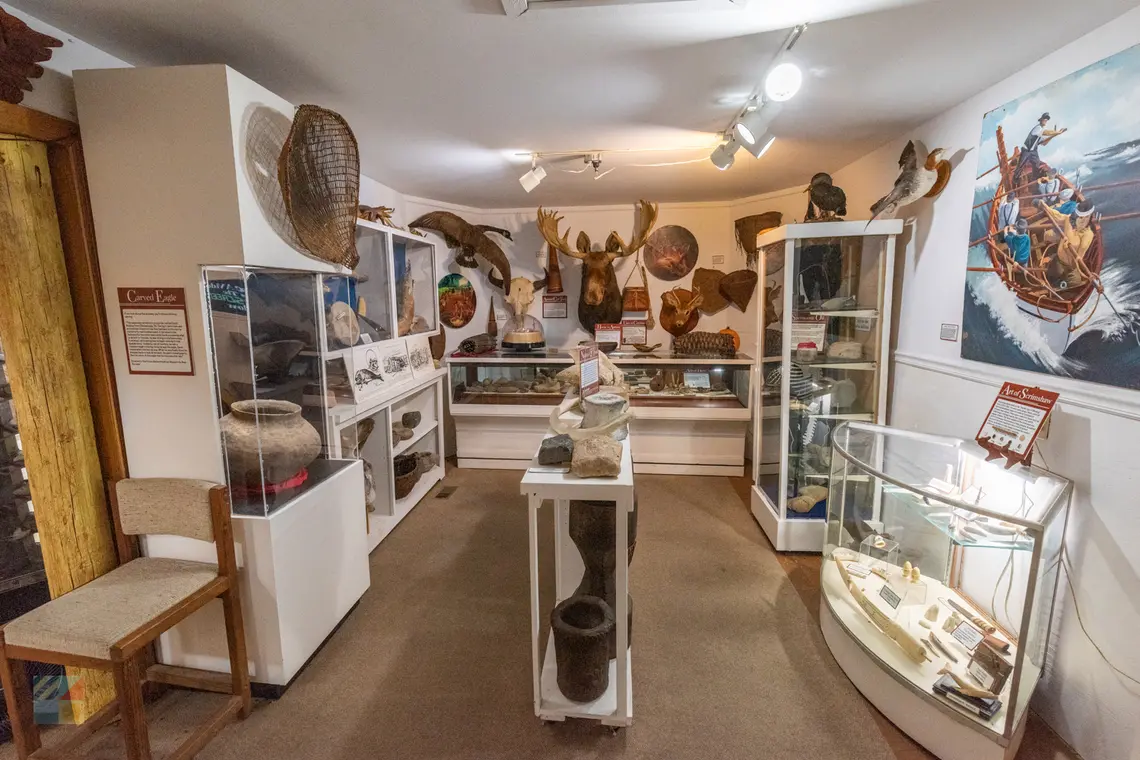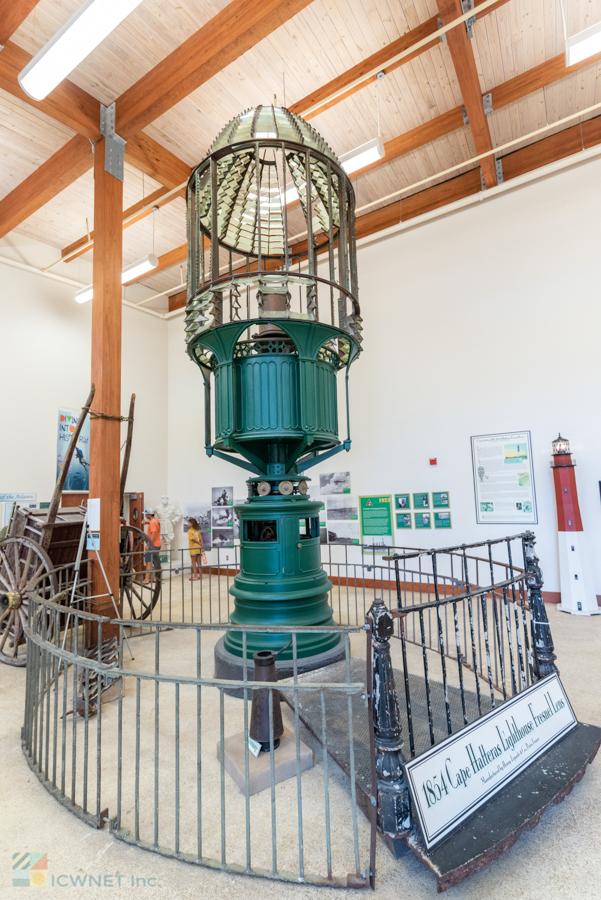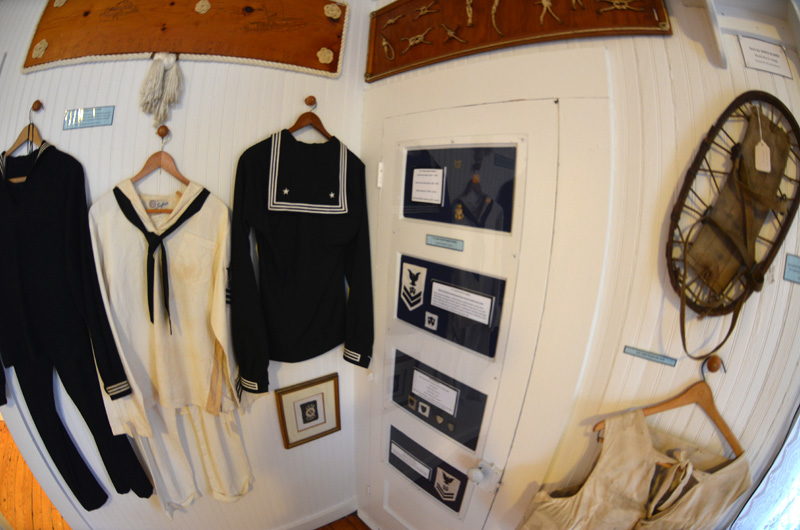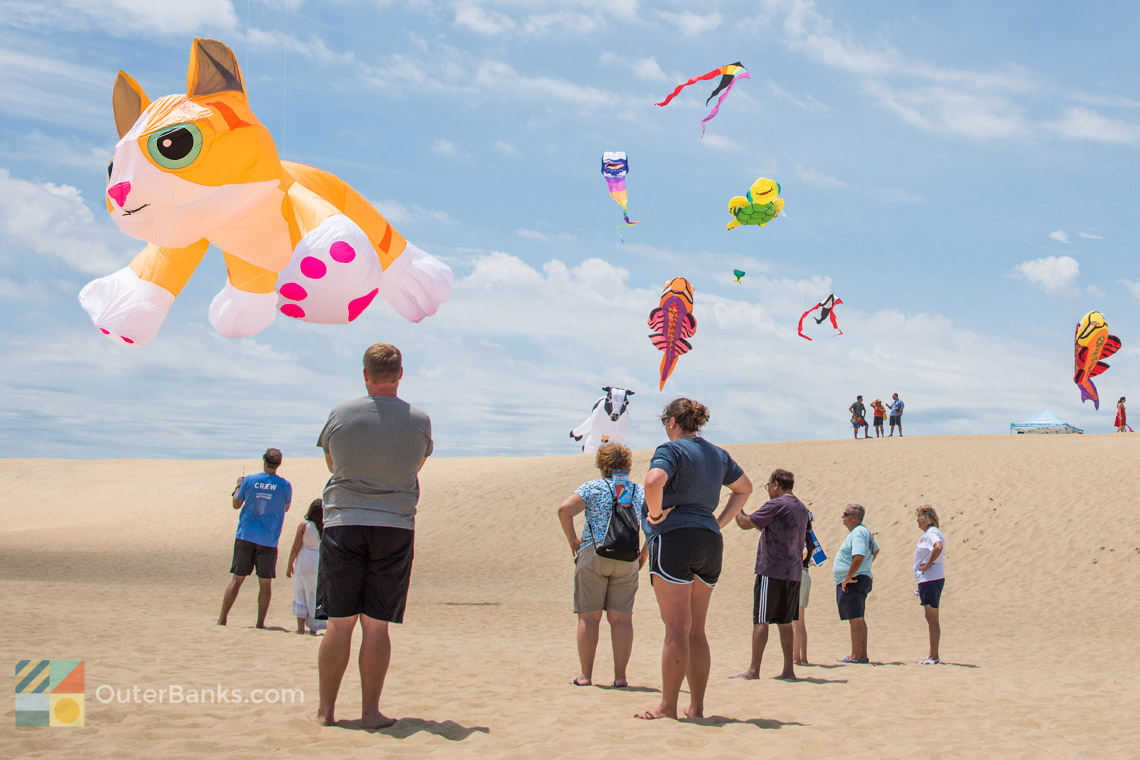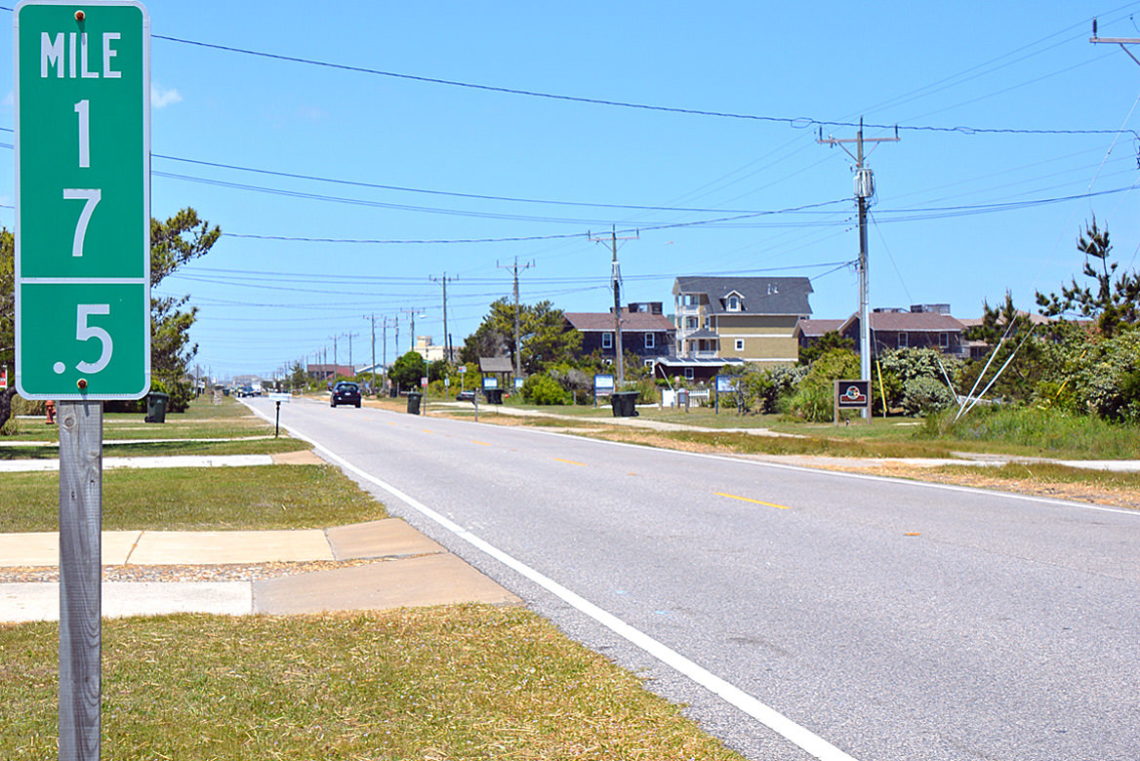The Outer Banks is rich in history, from the early explorers who first set foot on its shores 400 years ago to the groundbreaking first flight that launched modern aviation. Every community has a story and a resonant heritage, and as a result, the Outer Banks is home to a number of locally and nationally renowned museums honoring the area's unique stories, culture and landmarks.
On your next Outer Banks vacation, pop in to one of the many museums that span the coastline, like the First Flight Memorial and Museum, the Chicamacomico Lifesaving Station, or even the quirky Blackbeard's Pirate Exhibit, and get a dose of coastal North Carolina's distinctive culture and history.
The Corolla Wild Horse Museum
Corolla Map It
The wild mustangs of Corolla and Carova are one of the area's favorite attractions for nature loving visitors. The horses, which can be spotted regularly on the 4WD accessible beaches of Northern Currituck, are supposed descendants of late 16th Century Spanish Mustangs. The consensus is that these original mustangs were the original survivors of early shipwrecks that washed them onshore to Corolla, where they flourished for hundreds of years.
Today, the Corolla Wild Horse Fund works to preserve and protect Corolla's most famous residents, and their headquarters are located in Corolla, at The Corolla Wild Horse Museum.
The museum is located in one of Corolla's oldest buildings, the Historic Corolla Schoolhouse. Built in the early 1900s, the schoolhouse was the first of its kind, launching the Currituck County school system and giving the small population of Currituck Beach children a small but well-loved place to learn. In fact, the school house remained in operation well into the 1950s until it was finally closed and replaced by more modern facilities.
Thankfully, the schoolhouse was preserved and restored, eventually turning into the Corolla Wild Horse Museum. The Museum features touch exhibits for children, videos, aerial maps of the horses' various locations, and experts on hand to answer questions. Seasonal children's programs are available for a small fee, and the museum is open to the public for free on weekdays, 11:00 a.m. to 4:00 p.m. There is even a Wild Horse gift shop on site so visitors can take a little reminder of Currituck's first settlers' home.
Currituck Maritime Museum
Corolla 252-232-6105 Map it
Take a day trip or an afternoon off the beach to explore the heart of Historic Corolla Park, and you’ll find one of the Outer Banks’ newest and most noteworthy attractions, the Currituck Maritime Museum.
Situated next to some of the northern Outer Banks most famous attractions, including the Currituck Beach Lighthouse and the Whalehead, this museum unravels the history of the Historic Corolla Park and the Corolla community in general, with 10,000 square feet of exhibit space that is brimming with treasures and stories to discover.
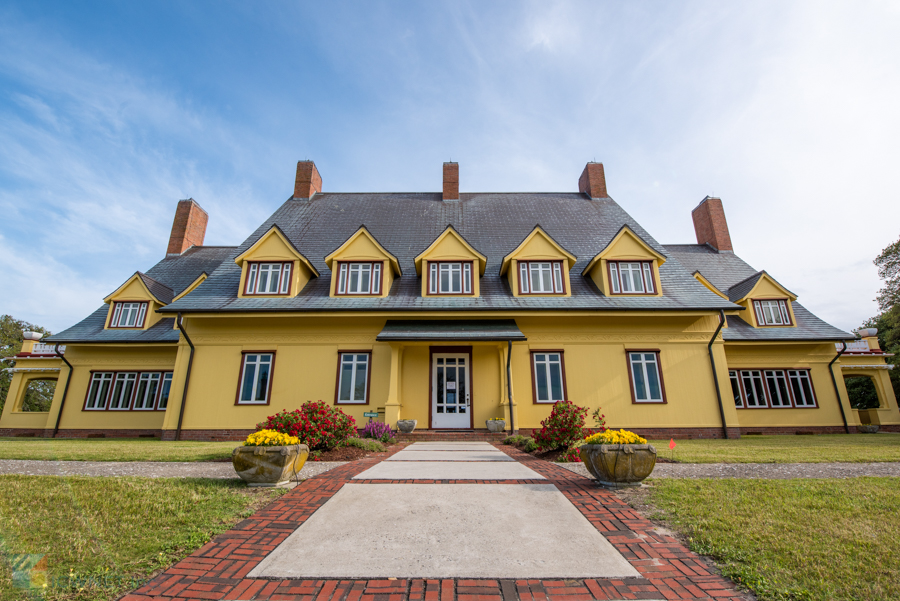
Whalehead in Historic Corolla Historic House Museum
Corolla 252-453-9040 Map It
The showpiece of the Whalehead in Historic Corolla Heritage Park in Corolla is the 21,000 sq. ft. former private home and retreat of northern industrialist and conservationist, Edward C. Knight, Jr. The sprawling custard yellow residence is distinctive for its nature-inspired Art Nouveau architecture and interior decorative art on display.
While visiting the 39 acres of the Whalehead in Historic Corolla Heritage Park, visitors find a tour of the historic home a must, as each intricately constructed and decorative room is filled with treasures from the decadent 1920s and beyond. The home was meticulously restored to its original grandeur, and had a second multi-million dollar restoration just a few years ago, making it an impressive and lavish home to explore.
The Whalehead in Historic Corolla home is open seasonally for tours in the summer months for a small fee. Annual events and fundraisers are also held at the club throughout the year, encouraging guests and attendees to dress up and party like it's 1929. For more information on seasonal hours and admissions fees, visit the Whalehead in Historic Corolla's website.
Outer Banks Center for Wildlife Education
Corolla 252-453-0221 Map It
The Outer Banks Center for Wildlife Education is located in Historic Corolla Park, the center is an impressive and marvelous 22,000 square foot interpretive center for young and old alike to explore the history and vast diversity of North Carolina's wildlife. One of the key displays is a massive living aquatic ephemera of fish, native to the region, housed in an 8,000 gallon aquarium where families can get up close and personal with a rich variety of finned swimmers. "You have to remember we have a variety of marine eco-systems here. The ocean, the sound and an estuary so it is pretty diverse.
Wright Brothers Monument and Museum
Kill Devil Hills 252-473-211 Map It
The Outer Banks' biggest claim to fame is arguably the launching of the first flight by Orville and Wilbur Wright in 1903. The two brothers from Ohio came to the North Carolina coast to experiment with their flying machines in the area's exceptionally windy conditions.
The historic "first flight" is memorialized on North Carolina license plates, on the North Carolina state quarter, and locally in Kitty Hawk where the flight took place at the Wright Brothers' Monument and Museum. The impressive monument towers over the Outer Banks on the hill where the Wright Brothers' successfully launched their plane, and at night time, the monument, which is lit up by spotlight, can be seen by vacation rental homes miles away.
Maintained by the National Park Service, visitors can climb the steep grassy hill to the monument itself for an up close view of the towering granite structure.
Nearby is the Wright Brothers museum where visitors can peruse a collection of memorabilia from aviation's historic first flight. The museum features a full scale reproduction of the 1902 glider and 1903 flying machine, an engine block from the original 1903 flyer, a reproduction of the Wright Brothers first wind tunnel, and a number of other odds and ends from the historic launching of their first airplane.
Nearby, a space-age building houses the new First Flight Centennial Pavilion, which was constructed in 2003 during the 100 year anniversary of the first flight. Here, visitors have a chance to marvel at how far we've come in aviation over the past century with videos, exhibits and interactive displays showcasing all aspects of flight, from those early small planes to the modern advancements of NASA. The Wright Brothers Memorial, Wright Brothers Museum, and First Flight Centennial Pavilion are open year round to the public for a small admission fee, every day from 9:00 a.m. to 5:00 p.m., and special programs for children and adults are available seasonally.
Roanoke Island Festival Park
Manteo 252-475-1500 Map It
For an in-depth and interactive look at the Outer Banks' Elizabethan roots, check out the Roanoke Island Festival Park. This indoor and outdoor complex of exhibits and attractions covers all aspects of early Outer Banks life. From a replica of an Algonquin Indian Town to the famous 16th century Elizabeth II sailing vessel on the Manteo Waterfront, the Roanoke Island Festival Park has a little something for everyone to enjoy.
In the late 1500s, English settlers first arrived on the Outer Banks, and began a colony on Roanoke Island, now Manteo. Here, they had a rough existence of sustenance living, tumultuous weather conditions, and occasionally hostile Native American neighbors. At the Roanoke Island Festival Park, visitors can explore their world in the sprawling indoor and outdoor complex.
The Roanoke Adventure Museum features 400 years of the region's history, including exhibits and treasures from the original Algonquian inhabitants, journals of the first European explorers, and objects and tools that were in daily use for the island's first residents. Visitors can also learn about the infamous Lost Colony, and the lesser known Freedmen's Colony, both legendary stories in Outer Banks folklore.
Nearby, visitors can also tour historic replicas of a European settlement as well as a Native American town. These live-action exhibits, featuring costumed members of their respective societies, feature a collection of small homes, agricultural areas, and interpreters, giving visitors a first-hand look at daily life in 16th century Roanoke Island. Don't be surprised to pass blacksmiths hammering away, or women rooting through the community gardens as you explore list in the 1500s.
On the outskirts of the park, visitors can also board and tour the Elizabeth II, a replica of a 16th century sailing ship. While on board, visitors can help costumed sailors swab the decks, plot a course with an astrolabe, and set the sails for the next voyage. Guests are free to explore every part of the ship, from the captain's quarters to the harbor-front decks. The interpretive staff happily interacts with visitors, and answers any questions guests may have about Roanoke Island's early roots.
Roanoke Island Festival Park is open daily from March 1 - December 31, 9:00 a.m. - 5:00 p.m. Group and school tours are welcome, and the park also has a gift shop on the premises. Roanoke Island Festival Park is also located close to the beloved Elizabethan Gardens and North Carolina Aquarium.
Outer Banks History Center
Manteo 252-473-2655 Map It
Within the grounds of the Roanoke Island Festival Park, researches and history nuts can do their own exploring at the Outer Banks History Center. The History Center is a regional archives and research library with nearly 300,000 manuscripts, maps, photographs, and books covering the wide and varied history of the Outer Banks. Considered one of the best collections of Coastal North Carolina research material, the History Center has provided valuable information for writers, historians, journalists, genealogists, and famous media outlets such as as the History Channel, the Weather Channel, and National Public Radio.
The collections date back to the late 1500s and include detailed references and research materials for every aspect of the Outer Banks' history, from the Elizabethan exploration to the Civil War to modern Coastal Ecology.
Reference and research services are available to visitors looking for specific topics or documents, and the center also features a gallery, and a comfortable reading room with audio and visual equipment for long-term browsers. The Outer Banks History Center is open to the public Monday through Friday, 9:00 a.m. - 5:00 p.m.
Island Farm
Manteo 252-473-6500 Map It
The Island Farm in Manteo is another interactive museum featuring an insider's peak at farm life in Coastal North Carolina in the mid-1800s. Dubbed a living history site circa 1847 on Roanoke Island, the Island Farm features a dozen buildings for visitors to explore, including a farmhouse, a reconstructed slave cabin, an outhouse, cookhouse, smokehouse, dairy, barns, chicken coop, corn crib, woodshed, and a blacksmith shop.
Farm animals roam freely around the grounds, including chickens, sheep, a cow, an ox and two banker ponies. Explore the farm and you'll also find an extensive kitchen garden, a grape arbor, and a collection of island fig trees and corn fields.
The Island Farm is open to the public seasonally, generally from April through November, from 10:00 a.m. to 4:00 p.m. Special events and educational programs are also held in the summer months, and tour or school groups are welcome. Check the Island Farm's website for upcoming events and seasonal hours of operation.
North Carolina Maritime Museum on Roanoke Island
Manteo 252-475-1750 Map It
Celebrate the Outer Banks' culture on the water with a visit to the Roanoke Island Maritime Museum, located in historic downtown Manteo in a cedar shaked, renovated boathouse. The museum pays homage to the Outer banks' history of boat building, and was the site of the construction of the Elizabeth II in 1982, which is docked nearby.
Known as the Creef/Davis Boathouse, in honor of two of the Outer Banks' most famous boat building families, the museum allows visitors to explore the intricate process of boat building from its early roots to modern day finished products. While visiting, folks might find local boat building volunteers hard at work creating new boats to launch out to the sound waters, and visitors are welcome to interact with the staff and ask questions.
Outside, visitors are encouraged to linger and enjoy the scenic views of Manteo's waterfront from a number of benches and picnic areas.
Workshops and classes are also available to the public and year round and programs range from Build a Boat in a Day to Shallowbag Bay Sail About. The museum is free to the public and open daily, and is part of the sprawling Roanoke Island Festival Park.
Chicamacomico Lifesaving Station and Museum
Rodanthe 252-987-1552 Map It
Visitors to Hatteras Island's northern villages of Rodanthe, Waves and Salvo are just a stone's throw away from one of the island's most treasured attractions and museums, the Chicamacomico Lifesaving Station. The small complex located in the heart of Rodanthe features two historic stations and 5 outbuildings that are open for visitors to explore.
The largest building in the complex in the main 1911 Lifesaving station, and it features a museum that honors the brave men who served the lifesaving stations of Hatteras Island and Rodanthe, (historically named Chicamacomico.) Here, visitors can view shipwreck artifacts, old uniforms and journals, and the tools and apparatuses that the original Hatteras Island lifesaving stations used to perform hundreds of rescues over the decades. The main building also features a museum gift shop, and local volunteers are on hand to answer any questions.
Tucked behind the museum gift shop, visitors can take a peek at the original and ornate lifesaving station, constructed in 1874, the 1907 Midgett House, a primary residence for men stationed at Chicamacomico, the 1872 Cook house, and the 1911 horse stables. Preservation is an ongoing effort for the museum, and the outbuildings may or may not be open to visitors, depending on reconstruction projects.
The Chicamacomico Lifesaving Station and Museum also offers seasonal programs for visitors including lifesaving drills and recreations. These "drills" feature members of the US Coast Guard, the modern day equivalent to the original Lifesaving Station. Children's programs and educational programs are also available throughout the year, and special holiday hours extend into late November, when the lifesaving station's main 1911 building is decorated and lit up for the holidays.
The Chicamacomico Lifesaving Station Historic Site and museum gift shop are open seasonally, generally through mid-April to late November, Monday through Friday, 10 a.m. to 5 p.m. Upcoming special events can be found on their website.
Cape Hatteras Lighthouse and Museum
Buxton 252-473-2111 Map It
Most all visitors to Hatteras Island take an afternoon off the beach to climb the world famous Cape Hatteras Lighthouse, the tallest brick lighthouse in the nation. But if you can divert your attention from the impressive black and white striped structure, you'll discover the Cape Hatteras Lighthouse museum, located just a few yards away, in the historic Lighthouse Double Keepers' Quarters.
This two floor museum, which showcases the home's original hardwood floors, walls and ceilings, features a variety of exhibits chronicling the lighthouse's stormy history, as well as Outer Banks and shipwrecks artifacts found along Hatteras Island's shores.
An audio visual room features seasonal educational presentations, and a museum lighthouse on the premises has all things Cape Hatteras Lighthouse, providing excellent shopping for lighthouse lovers. A Visitors Center is also nearby, manned by the National Park Service, for lighthouse-specific and general area information.
The museum and visitors center is open seasonally for visitors, generally from April through November. For day-trippers, the lighthouse grounds also feature picnic areas, walking trails, and easy beach parking.
Frisco Native American Museum
Frisco 252-995-4440 Map It
The Frisco and Buxton Woods on Hatteras Island were originally the home to the island's first residents, a small group of Algonquian Native Americans who lived on this island for centuries before the first English settlers ever arrived.
The Frisco Native American Museum, a large one story building trimmed in bright yellow on the sound side on NC Highway 12, pays homage to these original inhabitants as well as all North Carolina and national Native American tribes with an extensive collection of Native American artifacts, jewelry, pottery, and art.
Founded in 1987, the museum features a series of rooms and halls that are packed with a variety of artifacts from all across the country - an extensive collection that honors the owners' love of Native American culture and preservation. The museum also features a bird yard with a small observation room to observe examples of the island's hundreds of species of local and migrating birds.
Behind the museum, a woodsy nature trail featuring a variety of local flora and fauna leads to a dance circle, which during the annual Tribal Powwow and Living History weekend, is packed with drums, dancers, and people enjoying the celebration.
The annual Powwow, usually held in April, is a highlight of the museum and is a two day celebration of Native American culture featuring speakers, musicians, and vendors from all across North Carolina.
The Frisco Native American Museum is open Tuesday through Sunday, 10.30 a.m.- 5.00 p.m., with seasonal winter hours. Guided tours are available, as well as programs for special groups and schools. A gift shop is also on the premises, featuring a wide variety of art, jewelry and books focused on Native American culture.
Graveyard of the Atlantic Museum
Hatteras 252-986-2995 Map It
Follow NC Highway 12 all the way to the end of Hatteras Island, and you'll see the distinctive ark-shaped building that is home to the Graveyard of the Atlantic Museum, Hatteras Island's newest maritime museum.
The shifting offshore currents that compose the Diamond Shoals have destroyed many ships over the past 500 years, most of which are still settled miles offshore on the ocean bottom. But thanks to a number of expeditions and excavations, many artifacts from these shipwrecks have been brought to surface, and are featured prominently at the Graveyard of the Atlantic Museum.
One of the largest attractions in the museum is the original Cape Hatteras Lighthouse Fresnel Lens, which takes up a large section of the main entrance room. But beyond the lens are a number of exhibits on diving, pirates, the Civil War and World War II on Hatteras Island, 500 years of shipwrecks, and much more. One of the most mysterious attractions at the museum is the bell and other assorted remnants from the Carol Deering, a legendary ghost ship that was washed ashore with all passengers and crew missing, never to be found. In fact, the only living thing found on the boat was a 6-toed-cat.
The Graveyard of the Atlantic Museum is free to the public, (though donations are encouraged), and is open daily from Monday through Saturday, 10:00 a.m. - 4:00 p.m. The museum also features a number of educational programs and guest speakers and historians throughout the year, focusing on unique aspects of North Carolina's maritime history. A gift shop is also located on the premises, and an adjacent parking area offers easy access to Hatteras Village's beaches.
Teach's Hole Blackbeard Exhibit and Pirate Specialty Shop
Ocracoke 252-928-1718 Map It
Ocracoke Island is famous as the stomping grounds for some of the world's most infamous pirates, so it's no surprise that the village has a small privately run museum honoring the area's most famous pirate, Blackbeard.
Blackbeard, or Edward Teach, considered Ocracoke Island one of his best locations for plundering, as the cluster of barrier islands off the coast provided ideal hiding places for surprise attacks and subtle retreats. The museum, which was established in 1992, features a life-sized replica of Blackbeard and replicas of his ships, a number of artifacts including bottles, weapons, medical tools, and original art, and a documentary outlining Blackbeard's life and reign of terror on the Outer Banks.
The adjacent specialty shop is a must-stop for pirate lovers, and features over 1000 items for sale that relate to Outer Banks' pirates. Shoppers can find a world of pirate booty, including maps, flags, shirts, books, art, toys, jewelry, and much more. The exhibit and store are closed during the winter, but are open daily during the summer season.
Ocracoke Preservation Society Museum
Ocracoke 252-928-7375 Map It
Tucked along the harbor and overshadowed by Ocracoke's collection of motels, shops and restaurants, the Ocracoke Preservation Society Museum, also known as the David Williams House Museum, is an unassuming white home that dates back to the late 1800s.
The David Williams house was moved from its original location by the Anchorage Inn to its current location in 1989, and was restored meticulously by the Ocracoke Preservation Society to encourage locals and visitors alike to discover Ocracoke's rich history and culture.
The small home is lined with original items, furnishings and decor from 1800s Ocracoke, and a documentary features a study of the locals' famous "Ocracoke Brogue," an accent that North Carolina State researchers say has remained unchanged for literally hundreds of years.
The museum also features a gift shop filled with books, trinkets and treasures pertaining to Ocracoke Island history, and upstairs, visitors can make an appointment to browse the extensive research library for a wealth of historical documents, photos, manuscripts, and other resources covering Ocracoke's long history. Efforts are underway to catalog, organize, and digitalize the vast library to make it easily accessible to the public.
In the summer season, the museum features a series of "Porch Talks," where visitors are encouraged to mosey up to the front steps to hear historical accounts of the details of daily life on Ocracoke. Topics range from the local wildlife and seashells, to Ocracoke stories and legends, to Ocracoke cuisine and points of interest.
The museum is open seasonally and is typically closed during the winter months, and is free to the public.
All Outer Banks visitors, from history buffs to pirate lovers, will find there's a lot to discover about these historic North Carolina barrier islands. With centuries of history and monumental occurrences, from the initial English settlers of the Lost Colony to the Wright brothers' first flight, there's a lot to explore in all regions of the coastline. On your next vacation to the Outer Banks, reserve a day to tour the area's many museums, outdoor exhibits and attractions, and enjoy an in-depth look at the Outer Banks' rich history and culture.
-
OBX Wedding Fest
January 16th, 2026 - January 18th, 2026 -
Hatteras Island Oyster Roast
February 7th, 2026 1:00 PM - 4:00 PM -
First Friday in Manteo
March 6th, 2026 6:00 PM - 8:00 PM
Miller's Seafood & Steakhouse has been a favorite among locals and visitors for more forty years. Offering delicious southern cuisine for both breakfast and dinner in a casual family atmosphere infused with coastal flair, it's no wonder this...
Vacationers adore the Outer Banks for its unspoiled stretches of undeveloped shoreline, and some may not initially realize that this sporadic lack of development is completely intentional, and is the result of decades of careful environmental...
YOUR BEST SUMMER DAY - Nothing satisfies your craving for fun like a day at the H2OBX Waterpark. Start with that perfect Carolina sun. Add a dose of adrenaline as you soar 6 stories up on The Rogue Wave or drop 90 screaming feet down The Plank...
Many newcomers to the Outer Banks who are browsing the local restaurants, shops and area attractions online or in the local guide books notice an interesting addition to the standard address. Besides the typical business name, street name, street...
